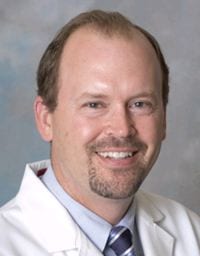
Late in 2010, the American Board of Sleep Medicine (ABSM) board of directors voted to develop and administer a Sleep Technologist Certification Examination, and in January the ABSM announced that the inaugural examination is scheduled to be offered in November 2011.
This decision was reached after extensive discussion across several board meetings, and it was made within the context of the American Academy of Sleep Medicine’s long-standing commitment to the advancement of the sleep technology profession. The initiative to develop a certification exam is a natural intersection of the AASM’s ongoing efforts to promote standardized education and safeguard the future of the sleep technology profession. Details of the AASM’s ongoing involvement in focused education, legislation, and sleep technology provide the proper context for a better understanding of this new endeavor.
FOCUSED EDUCATION
The AASM’s commitment to the development of formal education programs in sleep technology led the Commission on Accreditation of Allied Health Education Programs (CAAHEP) to approve the AASM in 2003 as one of the sponsoring organizations for the Committee on Accreditation for Polysomnographic Technologist Education (CoA PSG). In the formative years of the CoA PSG, the AASM provided management services to the organization at no cost, enabling it to devote all of its resources to the development of an educational accreditation program for the profession.
As a result, the CoA PSG was able to make quick progress, receiving CAAHEP approval of its Standards and Guidelines of Educational Programs in Polysomnographic Technology in 2004 and recommending the first programs for CAAHEP accreditation in 2006. Today, there are 32 CAAHEP-accredited sleep technology programs that are providing a solid educational foundation for the profession of sleep technology.
The AASM also developed the Accredited Sleep Technologist Education Program (A-STEP) to provide immediate access to educational instruction while sleep technology programs work toward earning formal recognition through CAAHEP accreditation. In 2010 alone, more than 550 students completed the A-STEP Introductory Course, and more than 5,000 individuals completed all 14 of the A-STEP online self-study modules.
LEGISLATIVE EFFORTS

In addition to promoting standardized education, the AASM has played an instrumental role in efforts to enact legislation that recognizes sleep technology as a separate and distinct allied health care profession. The AASM has invested countless hours and more than $1 million in direct support of efforts aimed at protecting scope of practice definitions for sleep technology and introducing favorable legislation and regulations.
As a result, sleep technologists now have a polysomnography practice act that provides a specific licensing/credentialing pathway in eight states and the District of Columbia. Furthermore, general exemption language allows sleep technologists to work within their scope of practice while under the direction of a licensed physician in 29 states, and three states specifically define sleep technology and its scope of practice. Through these efforts, we’ve made remarkable progress toward achieving the goal of securing the future of the sleep technology profession.
By launching a new initiative to develop a Sleep Technologist Certification Examination, the AASM is completing the connection between its work in the educational realm and its activity in the legislative arena. Earning certification is the goal to which students in CAAHEP-accredited sleep technology programs aspire, and both standardized education and certification are key requirements of state legislation. Therefore, the development of a certification exam is a logical next step for the AASM, and we believe that it is a necessary step for the sleep field.
The demand for credentialed sleep technologists continues to rise, as more than 2,200 sleep disorders centers currently hold AASM accreditation, which requires the employment of at least one registered sleep technologist. The urgency to become credentialed also is increasing, as legislation in many states requires the credentialing of sleep technologists, often by firm deadlines.
FORTIFYING THE SLEEP TECHNOLOGY PROFESSION
Sleep technology is a profession that has always attracted individuals who have a background and training in a variety of disciplines, including nursing, respiratory care, and electroneurodiagnostics. It also has broad appeal as an entry-level profession for individuals who have no prior training in the allied health care field.
As a result of this diversity, numerous credentialing pathways have been established to meet the individual needs of sleep technologists. The Board of Registered Polysomnographic Technologists (BRPT) offers a certification exam for entry-level sleep technicians and four pathways to the registered polysomnographic technologist (RPSGT) exam, including a pathway for individuals with another allied health care credential. The National Board for Respiratory Care (NBRC) also offers a specialty examination for respiratory therapists who perform sleep disorders testing and therapeutic intervention.
We believe that another credentialing pathway that draws upon the strengths of the ABSM will fortify the sleep technology profession for the future by helping to meet the clinical demand for credentialed sleep technologists. Having administered the nationally recognized board certification examination in sleep medicine from 1989 until 2007, and currently administering an examination in behavioral sleep medicine for doctoral-level professionals, the ABSM has a long track record of successful exam administration within the sleep medicine field.
|
Stay updated on the development of the ABSM sleep technologist certification exam. |
 |
The blueprint of the ABSM exam will reflect the skills that are taught by CAAHEP-accredited sleep technology programs, focusing uniquely on the day-to-day professional responsibilities of sleep technologists in the sleep center setting. Written by an expert examination committee, the exam questions will place a strong emphasis on practical clinical relevance, which will make the exam an effective gauge of a candidate’s immediate readiness to assist in the education, evaluation, treatment, and follow-up of sleep disorders patients.
The goal of the ABSM is to strengthen the future of sleep technology by promoting technical excellence in the profession’s unique methodological skill set through the development and administration of a rigorous and practical certification examination. We anticipate sharing more details about the exam as they become available this summer, and we look forward to working with the sleep technology community toward the common goal of promoting excellence in the provision of sleep-related patient care.
Nathaniel F. Watson, MD, MSc, is president of the American Board of Sleep Medicine. The author can be reached at [email protected].





